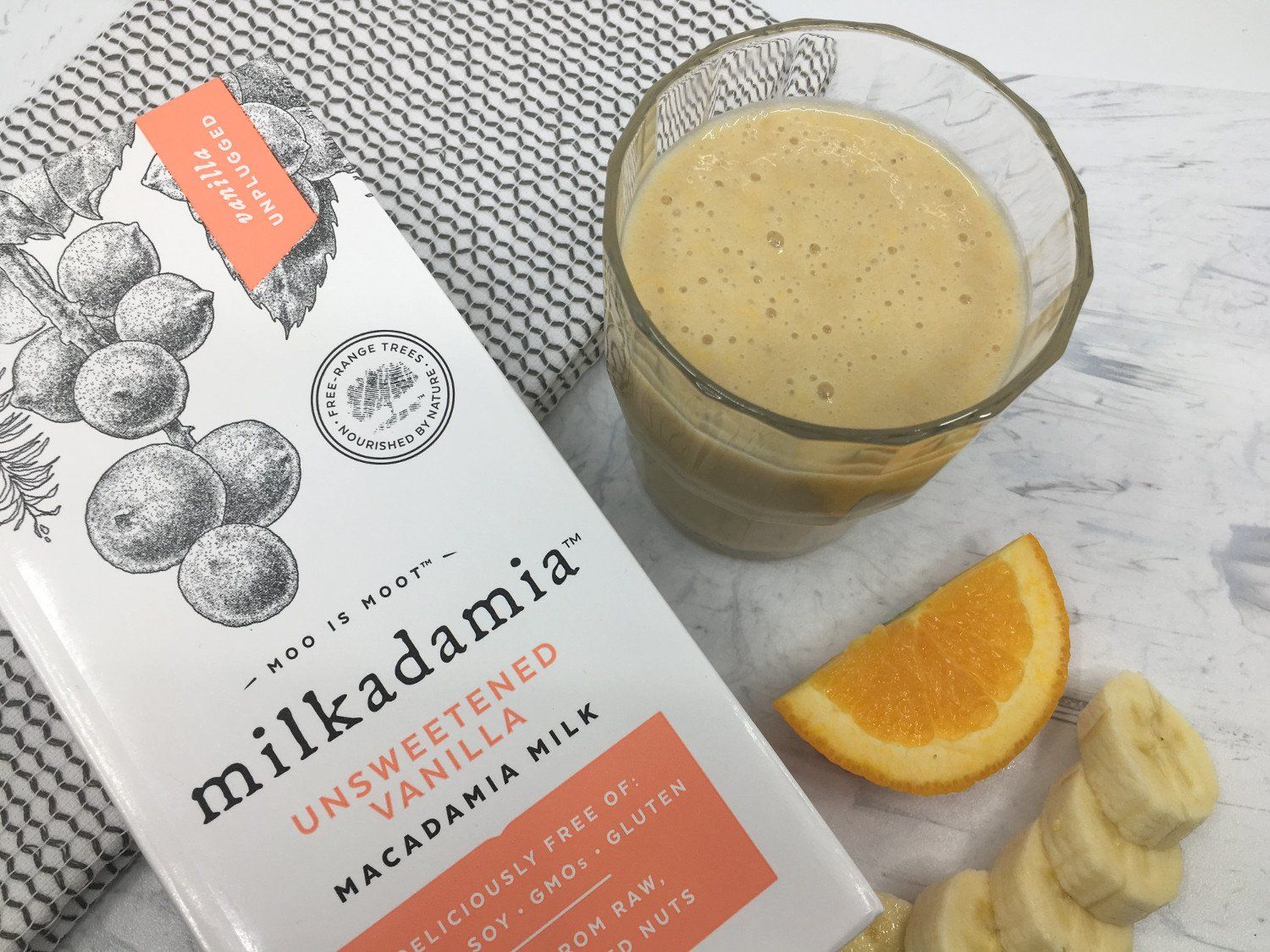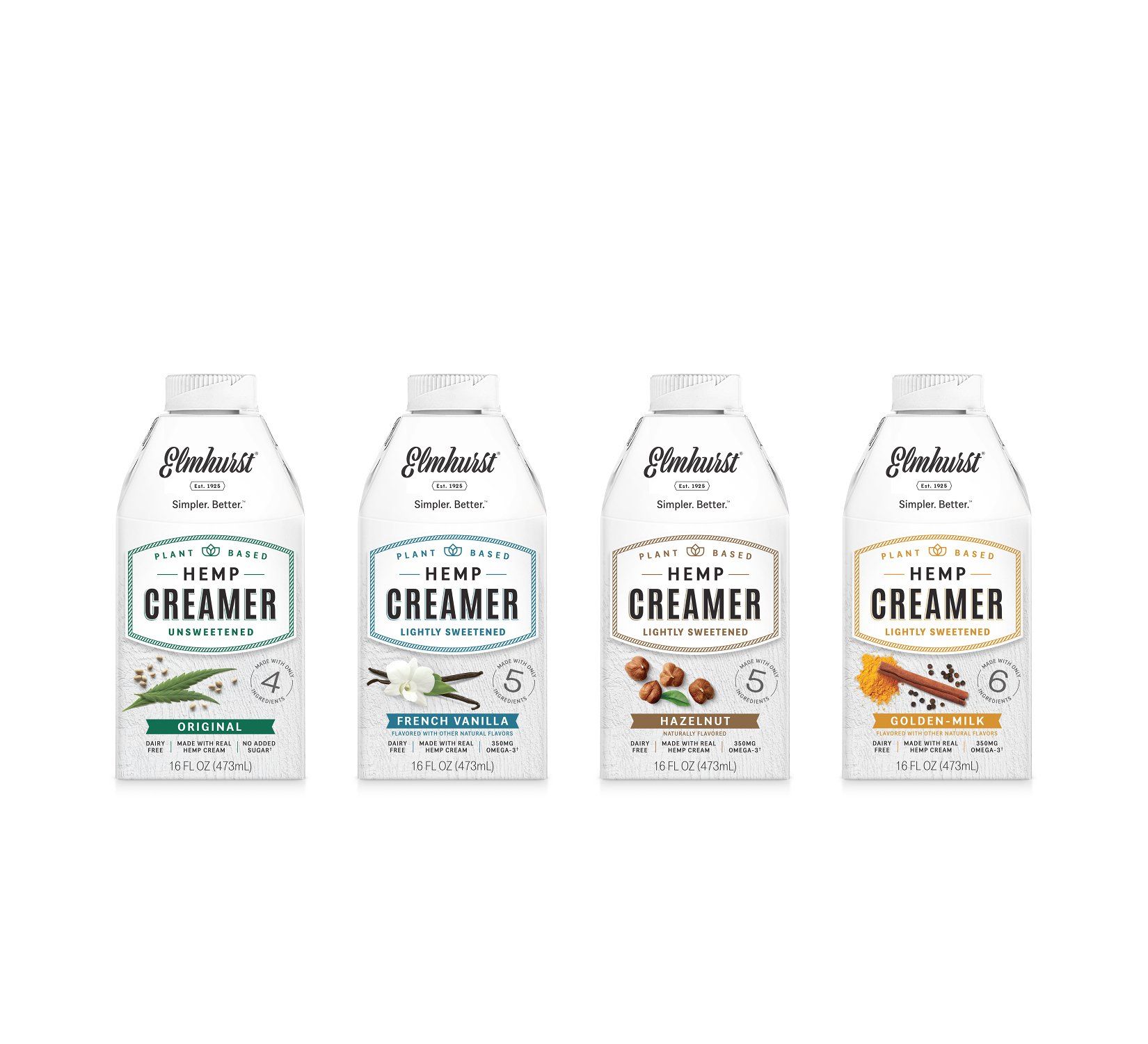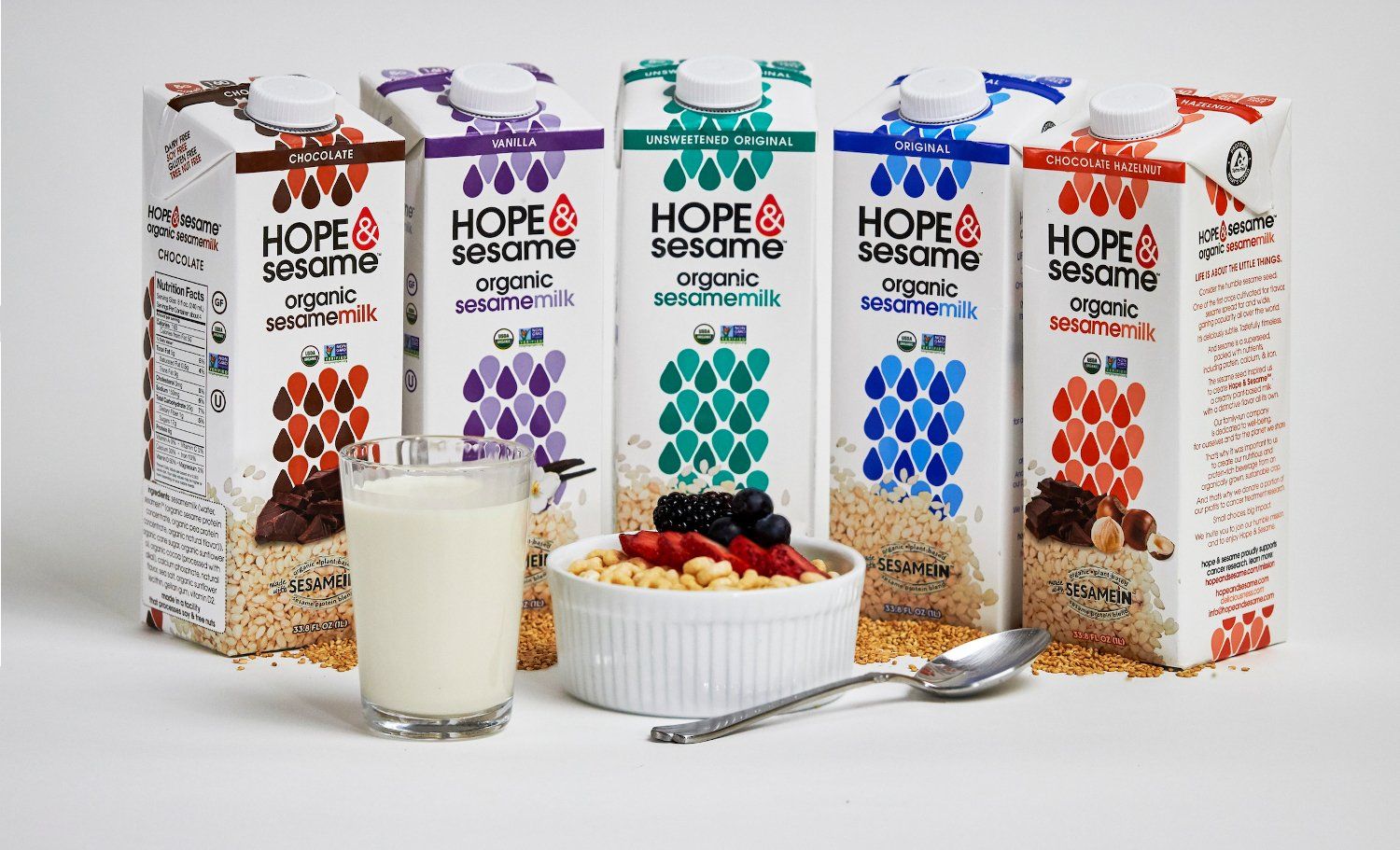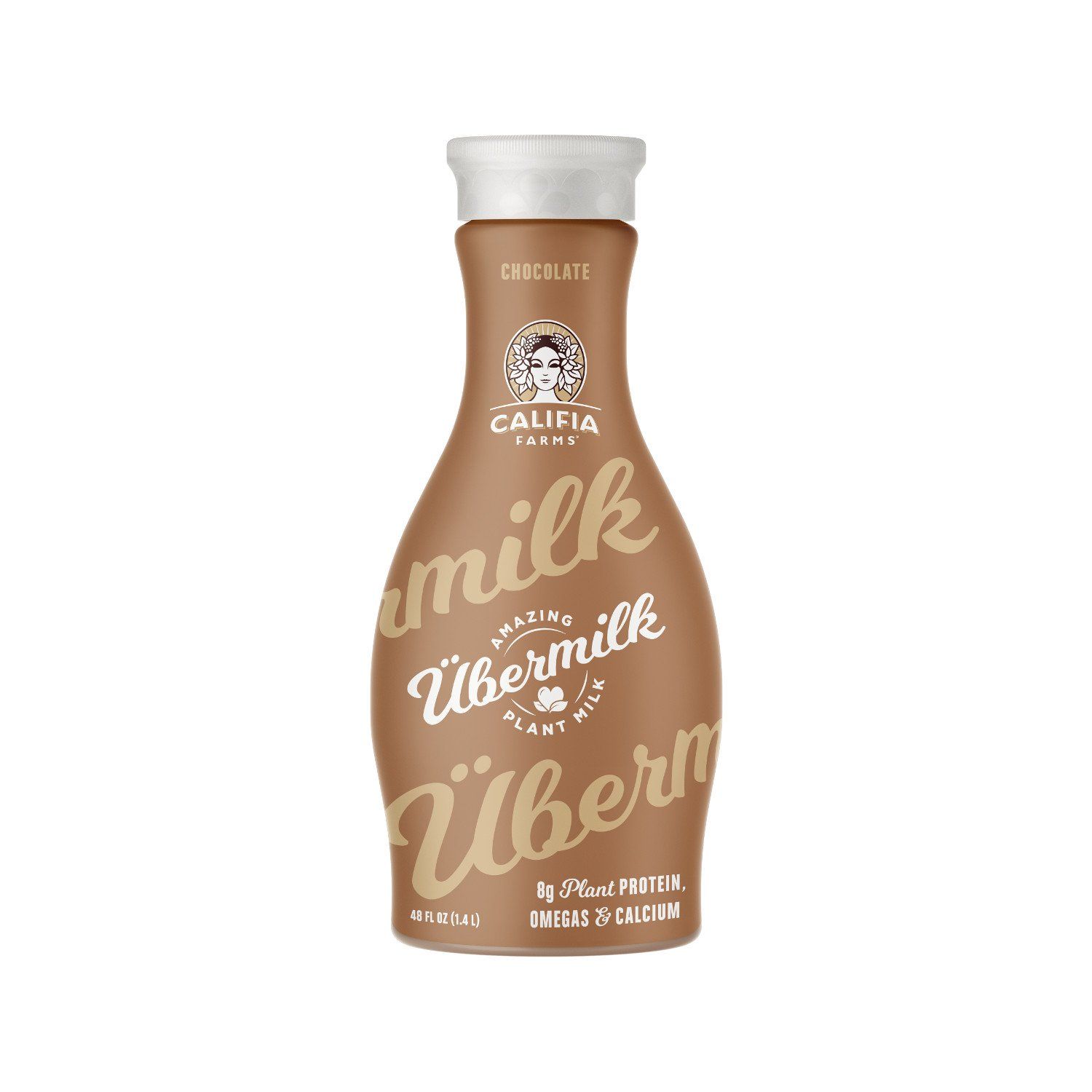Dairy alternatives: What does a plant-based product need to survive?
Also: Is the dairy-alternatives category in danger of jumping the nondairy shark?
Photo from Milkadamia

Alternative-dairy products have hit the food and beverage space with the force of a juggernaut, and few know this better than Peter Truby. As vice president of marketing for Elmhurst (Elma, NY), a maker of plant-based milks and creamers, he’s had a front-row seat to the category’s expansion, and he’s been taking notes.
“Several statistics stand out to me as showing how dynamic the plant-based dairy trend is,” Truby says. To start, he points to Nielsen data showing that the plant-based milk category grew 3.1% over the past year, even as dairy milk sales dropped 5%. What’s more, he adds, the Good Food Institute claims that plant-based milks account for 13% of total retail milk sales nationwide. “Thirty-six percent of consumers prefer plant-based milks according to Nutrition Business Journal,” he continues. “And globally, Markets and Markets says the dairy-alternatives market is predicted to be worth $19.5 billion by 2020.”
All of which is exciting for dairy-alternative brands and the fans who keep them going. But it also raises a question: Is the category in danger of jumping the nondairy shark? And are we in for a shakeout that’ll leave only a few brands standing? As the launches keep coming, category watchers are sussing out clues as to what any plant-based dairy alternative will need to survive.
All About Options
As far as Truby is concerned, the success of plant-based dairy boils down to optionality. “Want to enjoy some ice cream but you’re a vegan?” he asks. “There’s a nondairy option for you. Love cheese but you’re lactose intolerant? There are tons of plant-based cheeses for you to experiment with.”
And the fact that not just milk alternatives but frozen desserts, cheeses, and more are flooding the zone speaks to the category’s vibrancy. As Doug Radi, CEO, Good Karma Foods (Boulder, CO), notes, “You’ll see adjacent dairy segments like yogurt, cheese, sour cream, and dips continue to lead this growth.” Household penetration of plant-based dips may be only 1%-1.5%, he notes, but that gap “demonstrates a large adjacency opportunity for growth in plant-based options.”
The products clearly feed a need. Initially, that need concentrated among consumers who couldn’t consume dairy, whether because of allergies, intolerances, or otherwise. Then those who simply didn’t want to caught on, from vegans and consumers of conscience to people looking for something different.
Today, Truby says, “Plant-based milks give mainstream consumers a break from traditional dairy milk. And beyond dietary restrictions, consumers are looking for options that are more nutritious and sustainable, too. Plant-based dairy fulfills those needs.”
Indeed, notes Jim Richards, CEO, Milkadamia (Burr Ridge, IL), the sustainability angle matters now more than ever. “We’ve become more aware that we’re all voting with our plates,” he says. “Consumers don’t want food that casts a long pollution shadow the way dairy does.” Enter plant-based options.
A Maturing Category…
The alternative-dairy sector has seen its level of sophistication rise along with its profile. As Radi observes, “The category has improved in taste, texture, and nutrition. Specifically, by using new or newer bases like flax and oat, brands now deliver a more neutral flavor profile and creamier texture.”
Richards also lauds the wider variety of bases on offer. “The available options for consumers have grown exponentially,” he notes. “Beginning with rice and soy, nondairy milks now incorporate almond, macadamia, oat, cashew, and other nut- and seed-based options. And the growth of plant-based cheese, creamers, yogurts, frozen desserts, and butter has made it much simpler and more convenient for consumers to enjoy a kaleidoscope of tastes and textures rather than the ‘mono’ dairy offerings of yesteryear.”
…And a Crowding One
Hemp, walnut, cashew, hazelnut, peanut, pea: “They’ve all improved in texture and consistency as new formulation methods are developed,” Truby says. “The benefit is that all these plant milks have different flavor profiles and appeal to different consumers. Each variety has its own unique story, nutritional profile, and benefits.”
But as appealing as each may be, their continued proliferation raises the question: Is there room on shelves for them all?
“When you look at the number of alternative dairy products now compared to five years ago, people are looking for everything,” says Andy Dratt, chief commercial officer at the beverage innovation firm Imbibe (Niles, IL). “It’s indicative of a broader trend I see in that there’s so much abundance of choice, and in beverage more than anywhere.”
The problem is that at least at retail, shelf space is finite. “When you start getting sesame and pea and pumpkinseed protein beverages,” Dratt continues, “retailers need to make room, so the six almond milks become three. Then it’s about who has the biggest brand presence and sells the best. You end up with more choice across the segment and fewer options within any type.”
Surviving the Shakeout
That means “you have to slice the pie very finely to create points of difference,” Dratt concludes. “And even then, if you end up with 19 almond milks, how do they differentiate themselves?”
The key is providing auxiliary benefits-perhaps more protein, twice the calcium of milk, maybe an especially clean label or production process. “Now the focus goes into differentiating ingredient and processing sets because the core ingredient is no longer differentiated,” he says.
Take Elmhurst’s products, which the company makes using its HydroRelease production method. The method deploys pure water to separate the nut, grain, or seed’s fractions before “reassembling them as a creamy, beverage-ready emulsion that maintains the full nutrition of the source ingredient without the need for gums or emulsifiers to hold the product together,” Truby explains. That’s a big point of difference in a category where labels aren’t always as squeaky-clean as consumers hope.
Tastes Like the Real Thing
But flavor, Truby says, “is where plant-based milks can really shine and differentiate themselves, as people inherently expect that an almond or oat milk will taste different from dairy milk.”
That said, he concedes that plant-based alternatives will have to chase after the dairy ideal “at least for the time being.” The reason: tradition. “People have consumed dairy milk for centuries and have an emotional connection to it,” he says. “Even though they’re actively seeking alternatives, how they end up using plant-based milk is often the same as how they’d use dairy milk, so a familiar taste, texture, and appearance are important.
Richards sees things more radically. “The most forward-thinking plant-based products are totally replacing, rather than simply replicating, dairy milk,” he argues. “The possibility of new and intriguing plant-based taste experiences and recipe options is rescuing us from dietary boredom.” Besides, what’s a little sacrifice of tradition when the planet’s future is on the line? “Taste and texture, while still important, are being balanced against other more global considerations,” he believes.
Regardless of where they stand, the experts agree that staying apace with consumers’ taste, texture, and nutrition standards will keep this category going. “While new options may excite a plant-based consumer, they’ll likely not repeat purchase if these expectations aren’t met,” Radi says. “By delivering on these demands, we can make plant-based options the preferred options, or at least an added option, in shoppers’ carts.”
Read on to learn about the plant-based dairy alternatives winding up in consumers’ carts already.
Photo from Elmhurst

Elmhurst Hemp Creamers
Elmhurst made news in July by launching the first hemp-based creamers on the market. Available in four flavors and made with five or fewer ingredients-none of which are emulsifiers, gums, or oils, thanks to the company’s HydroRelease production process-the products provide “the same body and creaminess to coffee as would a normal dairy cream,” says Truby. “And they’re the most nutritious addition to your morning cup of coffee, with 350 mg of plant-based omega-3s.”
Imbibe’s Dratt is suitably impressed. “They’re cool because they use a production/hardware technology to process the seeds and make them function differently,” he says. “Their whole play is that there are no gums or emulsifiers. So that’s a cleaner formula with fewer ingredients, and they were able to get it through intellectual property. It’s a really neat platform.”
Truby adds that the creamers “represent the potential of two categories currently exploding in popularity: plant-based milk and hemp foods. Hemp is the most sustainable ingredient and will be one of the most important crops of the future.”
Photo from Good Karma

Good Karma Flax Milk
Good Karma’s first flax-based milk alternative dropped in 2012, leveraging the omega-3–rich seed as “an ideal base for plant-based options, as it helps deliver a surprisingly delicious and neutrally flavored protein, a texture close to dairy and a competitive nutritional profile-all while being free of all major allergens,” Radi says.
That’s no mean feat, and the product’s success is enticing other plant-milk players onto the flax-based field. Radi can’t blame them. “Specific to flax-based products,” he says, “consumers get the added benefit of plant-based omega-3s and lower levels of fat and calories than dairy options.”
Following its original flax milk launch, Good Karma added to its portfolio an Unsweetened Flaxmilk + Protein product, which offers 8 g of plant-based protein-equivalent to the protein content of dairy milk, the brand points out.
Photo from Good Karma

Good Karma Plant-Based Dips, Sour Cream
“We noticed that many of our fans were using our existing products to make their own dips,” Radi says. That inspired Good Karma to launch the sour cream and French-onion and ranch dips that began hitting shelves nationally this past spring.
With coconut oil, tapioca flour, and pea protein as their base, the products stand out by lacking the noticeable aftertaste, thick texture, and allergens-think nuts and soy-common to existing plant-based sour cream and dip options. They needn’t lean on thickeners like carrageenan for their texture, either, Radi adds.
On the nutrition side, a serving of the sour cream and dips has about half the fat of other plant-based dairy offerings, according to Radi. “And they’re made using a traditional culturing process, making them the only plant-based options with live and active cultures.”
Photo from Hope & Sesame

Hope & Sesame Sesame Milk
As a beverage innovation firm, Imbibe is no stranger to plant-based dairy-alternative formulation. But, says Dratt, “Some source materials are easier to work with than others.” And sesame, it turns out, was not easy to work with.
It took Imbibe and their partners at Hope & Sesame a lot of ingenious formulating and “a very long time to figure out,” Dratt says, but the fruit of their efforts is a sesame milk that Dratt thinks has real promise because it’s free from common allergens and it “offers something that tastes great.”
“It’s a totally unusual take,” he continues. “Sesame hasn’t been much more than something you put on bagels, or use as an oil for cooking. But it has inherent health benefits. How do we repurpose that as something that can be used in a way that people are familiar with?” As sesame milk, that’s how.
Photo from Califia Farms

Califia Farms Ubermilk
The German term “uber” means “over,” “above,” or “across.” And being made primarily from oatmilk, pea protein, flaxseed oil, and sunflower oil and seeds, Califia Farms’ Ubermilk-launched in early 2019-does indeed reach across the plant-based spectrum for its formulation.
The Los Angeles-based company developed the product to deliver a thicker texture and superior nutrition-more-complete protein; plant-based omega-3s from flax-than standard oatmilks.
For his part, Dratt finds the product’s pan-plant origin intriguing. “It’s Califia’s combination of different bases that makes a milk that isn’t overtly identified by its source material.”
Prinova acquires Aplinova to further increase its footprint in Latin America
April 7th 2025Prinova has recently announced the acquisition of Brazilian ingredients distributor Aplinova, which is a provider of specialty ingredients for a range of market segments that include food, beverage, supplements, and personal care.










